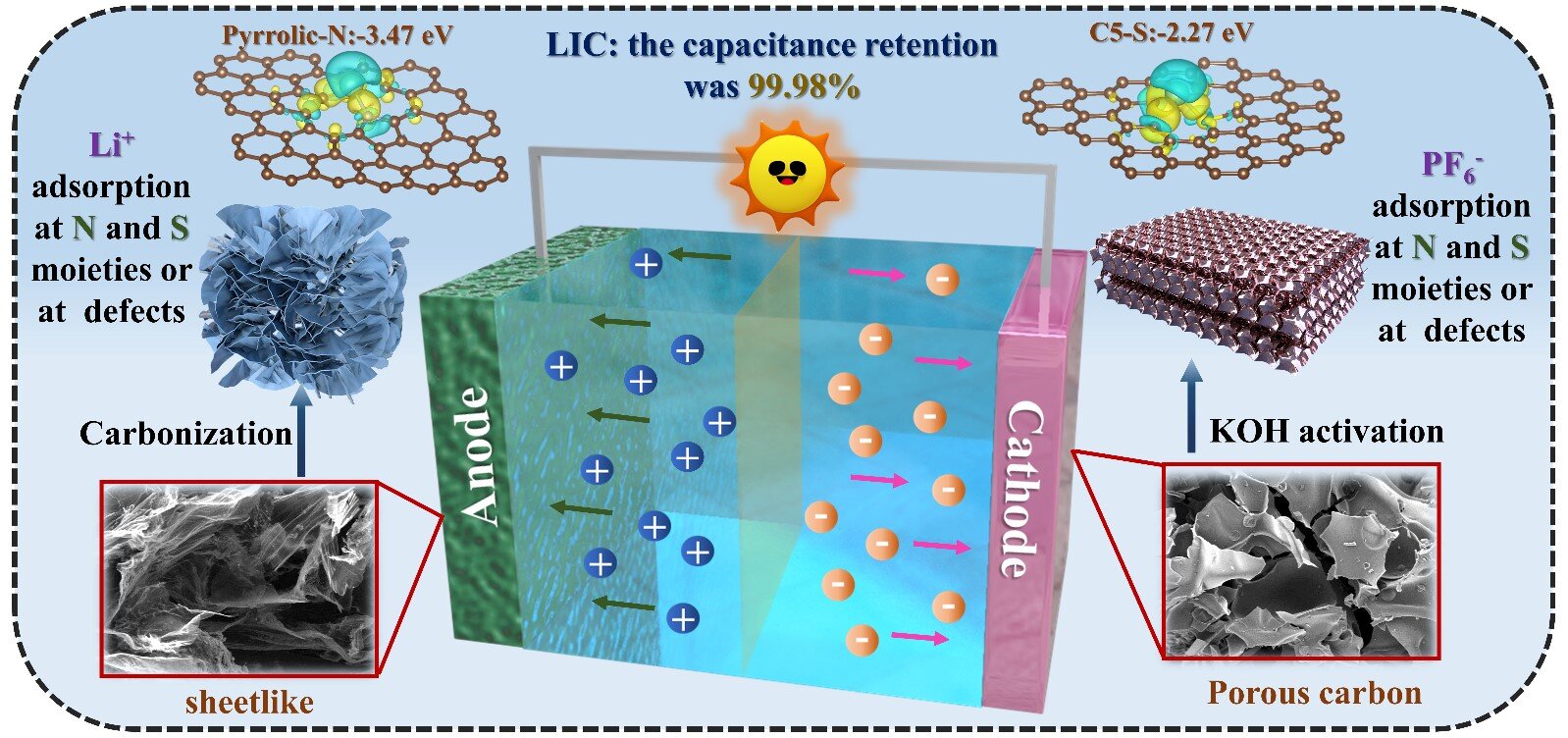By KeAi Communications Co.
The portable and electric energy storage market has always favored lithium-ion batteries (LIBs) and supercapacitors due to their ability to provide higher energy and power compared to other systems.
However, in demanding applications like electric vehicles, there’s a need for a device that can efficiently produce both high power and high energy over many cycles. This poses challenges for current technologies and has led researchers to explore alternative energy storage solutions.
A promising approach is to modify the high-conductive hard carbon anode to match it with an activated carbon cathode, creating a dual-carbon LIC (lithium-ion capacitor). In a recent study, researchers used a one-pot in-situ expansion and heteroatom doping strategy to prepare sheet-like hard carbon and obtain activated carbon through activation processes.
“Nevertheless, the mismatch in ion kinetics between the cathode and anode can result in unsatisfactory cycling lifetime and anode degradation,” explained Yingxiong Wang, lead author of the study. “To address this limitation, we employed a special method to create two types of carbon materials: sheet-like hard carbon and activated carbon.”
Wang and his team used ammonium persulfate to expand and modify the hard carbon, making it more suitable for use in batteries. These carbon materials, known as FRNS-HC and FRNS-AC, were derived from furfural residues, a byproduct of a natural substance. They were then tested in LIBs.
“The results were impressive—when FRNS-HC was used as the negative electrode, it could store 374 mAh g-1 at low power level and 123.1 mAh g-1 at a higher power level,” said Wang. “When combined with a special porous carbon material as the positive electrode, the whole battery exhibited a high specific energy of 147.67 Wh kg-1, with a power output of about 199.93 W kg-1.”
Importantly, the battery maintained its performance even after being charged and discharged 1,000 times. The findings were published in the journal Green Energy & Environment.
“We advocate for the use of biomass-based raw materials as carbon precursors, along with efficient and environmentally friendly synthesis techniques,” said Wang. “This study presents a promising approach to create heteroatom-doped porous carbon from biomass waste, and it has great potential for advancing high-energy-density devices.”
More information:
Xiaoying Guo et al, Furfural residues derived nitrogen-sulfur co-doped sheet-like carbon: An excellent electrode for dual carbon lithium-ion capacitors, Green Energy & Environment (2023). DOI: 10.1016/j.gee.2023.05.007
Provided by KeAi Communications Co.
Citation:
Advancing heteroatom-doped porous carbon nanomaterials for lithium-based energy storage applications (2023, July 26)
retrieved 26 July 2023
from https://phys.org/news/2023-07-advancing-heteroatom-doped-porous-carbon-nanomaterials.html
This document is subject to copyright. Apart from any fair dealing for the purpose of private study or research, no
part may be reproduced without the written permission. The content is provided for information purposes only.
Denial of responsibility! TechCodex is an automatic aggregator of the all world’s media. In each content, the hyperlink to the primary source is specified. All trademarks belong to their rightful owners, and all materials to their authors. For any complaint, please reach us at – [email protected]. We will take necessary action within 24 hours.

Jessica Irvine is a tech enthusiast specializing in gadgets. From smart home devices to cutting-edge electronics, Jessica explores the world of consumer tech, offering readers comprehensive reviews, hands-on experiences, and expert insights into the coolest and most innovative gadgets on the market.


